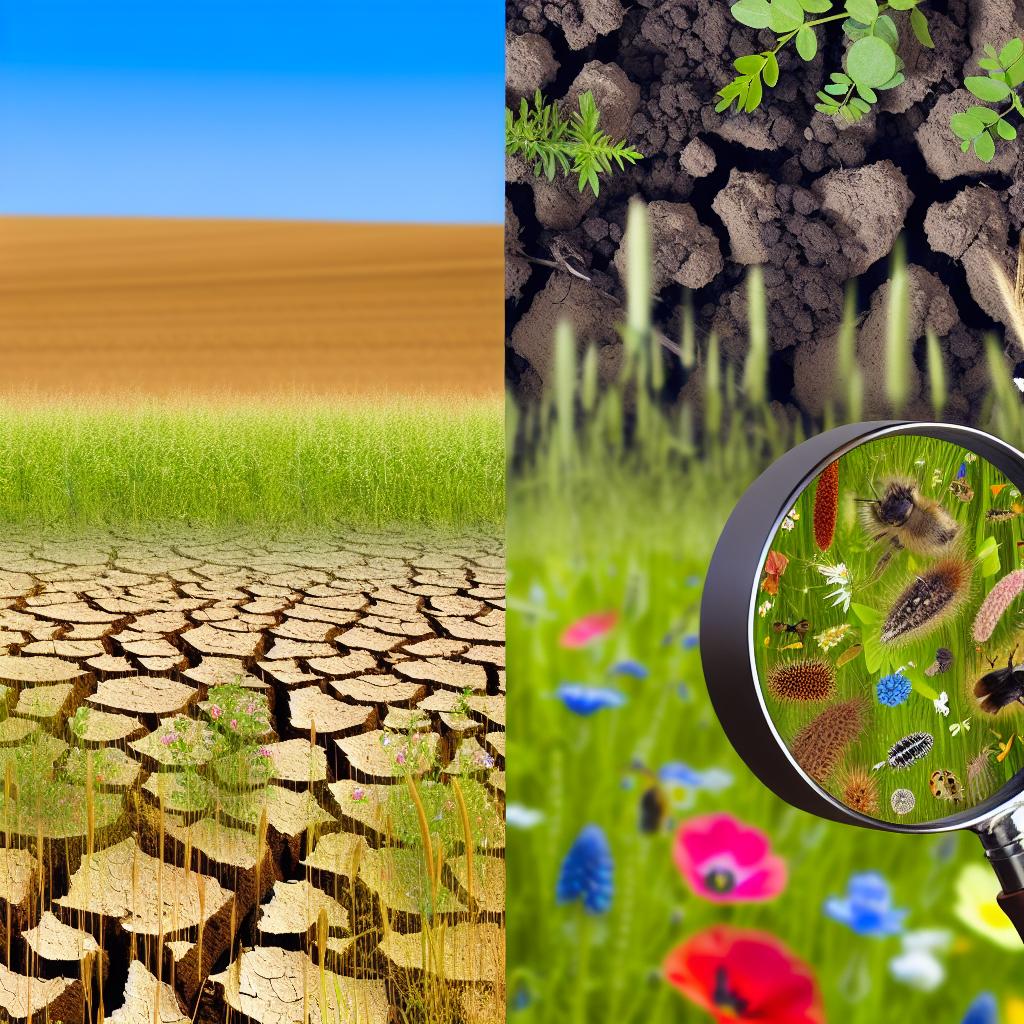
How Rewildering Can Improve Soil Health
Understanding Rewildering
Rewildering is a practice that seeks to return ecosystems to their natural states by allowing them to evolve without significant human intervention. This process primarily focuses on restoring biodiversity, which is essential for the ecological balance and resilience of these habitats. By facilitating natural growth and interactions, rewildering can enhance the robustness of ecosystems, leading to improved soil health. This comprehensive examination of rewildering will delve into its implications for biodiversity, soil health, and overall ecosystem resilience.
The Role of Biodiversity in Soil Health
The concept of biodiversity plays a pivotal role in maintaining and enhancing soil health. Biodiversity refers to the variety of life forms within a given ecosystem, encompassing plants, animals, and microorganisms. In a rewildered ecosystem, this diversity ensures a balance that supports vital ecological functions. A diverse range of plant species, each with unique root structures, creates an intricate network of pathways in the soil. These pathways facilitate the movement of air and water, which are critical components for maintaining healthy soil conditions.
Moreover, biodiverse ecosystems establish a robust network of interactions among different organisms. For instance, microorganisms such as bacteria and fungi engage in complex relationships with soil and plant roots, leading to efficient nutrient cycling. These interactions minimize the dependency on chemical fertilizers by naturally supplying the essential nutrients required for plant growth. As a result, ecosystems become self-sustaining, with natural processes contributing to soil fertility and productivity.
Microbial Activities and Nutrient Cycling
The presence of diverse microbial populations is a hallmark of rewildered landscapes. These microorganisms, including bacteria, fungi, and actinomycetes, play an integral role in decomposing organic matter. Through this decomposition, nutrients such as nitrogen, phosphorus, and potassium are released into the soil, where they become available for plant uptake.
This nutrient cycling is essential for maintaining soil fertility and supporting plant growth. In rewildered ecosystems, the efficiency of nutrient cycling increases due to the diverse microbial community. Each microorganism has a specific role in breaking down particular organic compounds, ensuring that no resources are wasted. This complex web of interactions results in balanced soil chemistry, promoting plant vitality and reducing the need for artificial soil amendments.
Natural Soil Fertilization
A key benefit of rewildering is the natural fertilization of soil that occurs as organic matter breaks down. Leaf litter, fallen twigs, and animal remains undergo decomposition, enriching the soil with essential nutrients. This natural process significantly contributes to the nitrogen and phosphorus content of the soil, which are crucial for plant development.
The reduction in reliance on synthetic fertilizers not only cuts down costs for managing ecosystems but also mitigates potential environmental impacts associated with chemical use. These impacts often include water pollution and soil degradation. Therefore, natural fertilization through rewildering presents a sustainable alternative, fostering a resilient environment.
Rewildering and Soil Structure
Letting ecosystems function uninhibited leads to significant improvements in soil structure, a cornerstone of agricultural and ecological health. Native vegetation, with its intricate root systems, improves soil aggregation. The binding of soil particles into aggregates prevents erosion and enhances soil stability.
Additionally, organic matter derived from decomposing vegetation forms humus, a critical component that aids soil cohesion. The presence of humus enhances the physical properties of the soil, including its texture, porosity, and moisture retention capacity. These improvements are vital for sustaining plant growth, particularly during adverse weather conditions such as droughts.
Water Retention and Soil Erosion
The impact of rewildering on water retention and soil erosion is profound. Improved soil structure enables soils to hold more water, reducing runoff and increasing drought resilience. During periods of scarce rainfall, the enhanced water retention helps maintain soil moisture levels, ensuring that plants receive the water they need for growth and survival.
Moreover, the presence of dense plant cover holds soil in place, preventing erosion. This stabilizing effect is crucial in safeguarding the soil surface against the impact of rain and wind. By minimizing erosion, rewildering contributes to the longevity and productivity of the ecosystem, securing it for future generations.
Conclusion
Rewildering is a compelling approach to ecosystem management that offers numerous benefits for soil health and ecological sustainability. By promoting biodiversity, encouraging microbial activities, facilitating natural fertilization, and strengthening soil structure, rewildering helps create resilient and self-sustaining ecosystems. These ecosystems require minimal human intervention, which reduces the ecological footprint and supports long-term soil health.
For practitioners and enthusiasts in the fields of environmental conservation and sustainable agriculture, understanding and implementing rewildering practices can be a transformative experience. It not only helps in conserving biodiversity but also in mitigating challenges such as soil degradation and climate change. Embracing rewildering principles can lead to healthier, more balanced ecosystems, paving the way for a sustainable future.